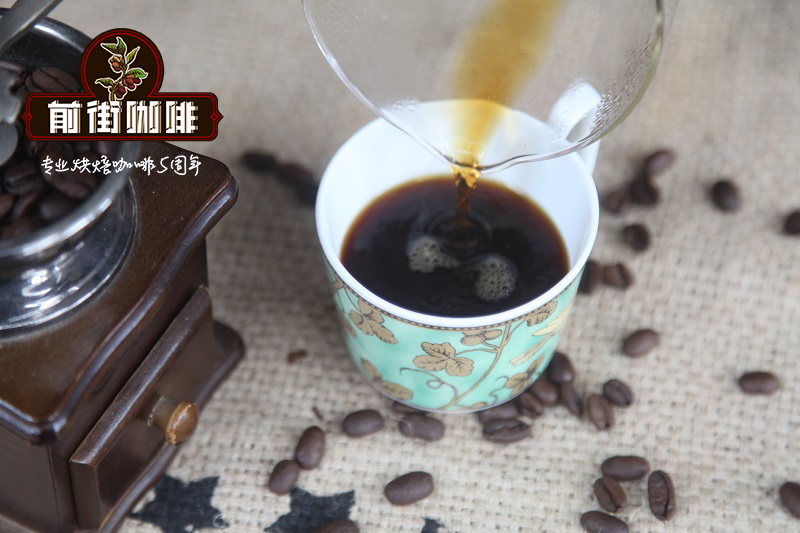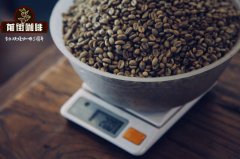Costa Rica Shumava Estate Coffee

Professional coffee knowledge exchange more coffee bean information please follow the coffee workshop (Wechat official account cafe_style)
The coffee industry in Costa Rica has developed since the middle of the 18th century. it is the country where coffee was first introduced into Central America and has a long history. The coffee organization has a complete system from production to marketing. Costa Rican coffee has always been recognized by the world in terms of quality and quantity, and has been rated as one of the world-class producers of high-quality coffee. Because it is located in the Central American Gorge, the territory is full of volcanoes, has the natural advantages of sunshine and land, and the climate is reconciled by Pacific and Atlantic currents and sea breezes at the same time, the coffee produced is deeply affected by the local micro-climate and soil conditions. coupled with stable treatment and development policies, it has always been famous all over the world for producing coffee with rich and bright acidity, mellow and clear texture. Costa Rica began growing coffee about two hundred years ago, first on the slopes of the Poas and Barva volcanoes, today known as the Central Valley, and the seven main coffee-producing areas are distributed from northwest to southeast, along with the inland central plateau. Costa Rican volcanic terrain with fertile volcanic ash, mild and suitable temperature, and stable and abundant rainfall, is one of the factors that coffee has become a major agricultural product in Costa Rica. Its coffee beans are all Arabica species. Pure flavor, pleasant aroma, both in acidity and taste have a charming level of balance.
Shumawa Manor belongs to the western valley producing area, is one of the seven producing areas in Costa Rica, along with Tarazhu and the central valley ranked the three best producing areas. Located in the fertile valley north of Costa Rica's volcanoes, near the city of Orange County, at 1700 meters above sea level, Shumawa Manor is planted with 10 hectares of Villasarchi, 2 hectares of SL28, 1 hectare of geisha and other varieties. The owner of the estate has two estates, Monte Llano Bonito and Monte Lourdes, both of which have been named Finca Sumava de Lourdes in the new estate, and now the manor manager Jose Ordonez has a full-time team under which, in addition to clearing the land to grow new species, a large area of land is reserved as a forest reserve for wild animals to live naturally.
In the customized workers' camp, there are ten permanent workers living on the farm. They all accept accommodation in their work.
Finca Sumava de Lourdes adheres to strict agricultural practices to ensure the lowest use of herbicides and pesticides. Farmers use MMs (mountain microbes) and minerals from natural sources as much as possible.
This is a farm and the owner likes to grow many different grape varieties. If you walk around the farm, you will see Pacamara,Mokka,SL 28, GeishaMagol, Caturra and Villa Sarchi growing around the farm.
Important Notice :
前街咖啡 FrontStreet Coffee has moved to new addredd:
FrontStreet Coffee Address: 315,Donghua East Road,GuangZhou
Tel:020 38364473
- Prev

What is the farmers' cooperative in Gachasha Gachatha, Kenya?
For more information on coffee beans, please follow the Coffee Workshop (Wechat official account cafe_style) Gachatha is located in the Gakata Farmers' Cooperative, about 150km north of Nairobi, Kenya, adjacent to the town of Otaya in Niye County. Coffee and tea grow here in cadmium orange soil on the slopes of the Aberdale Mountains. Bright green leaves, huge banana leaves
- Next

The flavor trend of Xidamo Shaqisuo in the producing area of Sidamo.
The flavor of Sidamo Shaqiso is divided into four grades: Region, Zone, woreda and kebele. Most of the raw coffee beans are named according to this rule. Guji-Shakiso is located in the southeast of the well-known producing area and belongs to Oromia Regio in the division of administrative region.
Related
- Detailed explanation of Jadeite planting Land in Panamanian Jadeite Manor introduction to the grading system of Jadeite competitive bidding, Red bid, Green bid and Rose Summer
- Story of Coffee planting in Brenka region of Costa Rica Stonehenge Manor anaerobic heavy honey treatment of flavor mouth
- What's on the barrel of Blue Mountain Coffee beans?
- Can American coffee also pull flowers? How to use hot American style to pull out a good-looking pattern?
- Can you make a cold extract with coffee beans? What is the right proportion for cold-extracted coffee formula?
- Indonesian PWN Gold Mandrine Coffee Origin Features Flavor How to Chong? Mandolin coffee is American.
- A brief introduction to the flavor characteristics of Brazilian yellow bourbon coffee beans
- What is the effect of different water quality on the flavor of cold-extracted coffee? What kind of water is best for brewing coffee?
- Why do you think of Rose Summer whenever you mention Panamanian coffee?
- Introduction to the characteristics of authentic blue mountain coffee bean producing areas? What is the CIB Coffee Authority in Jamaica?

